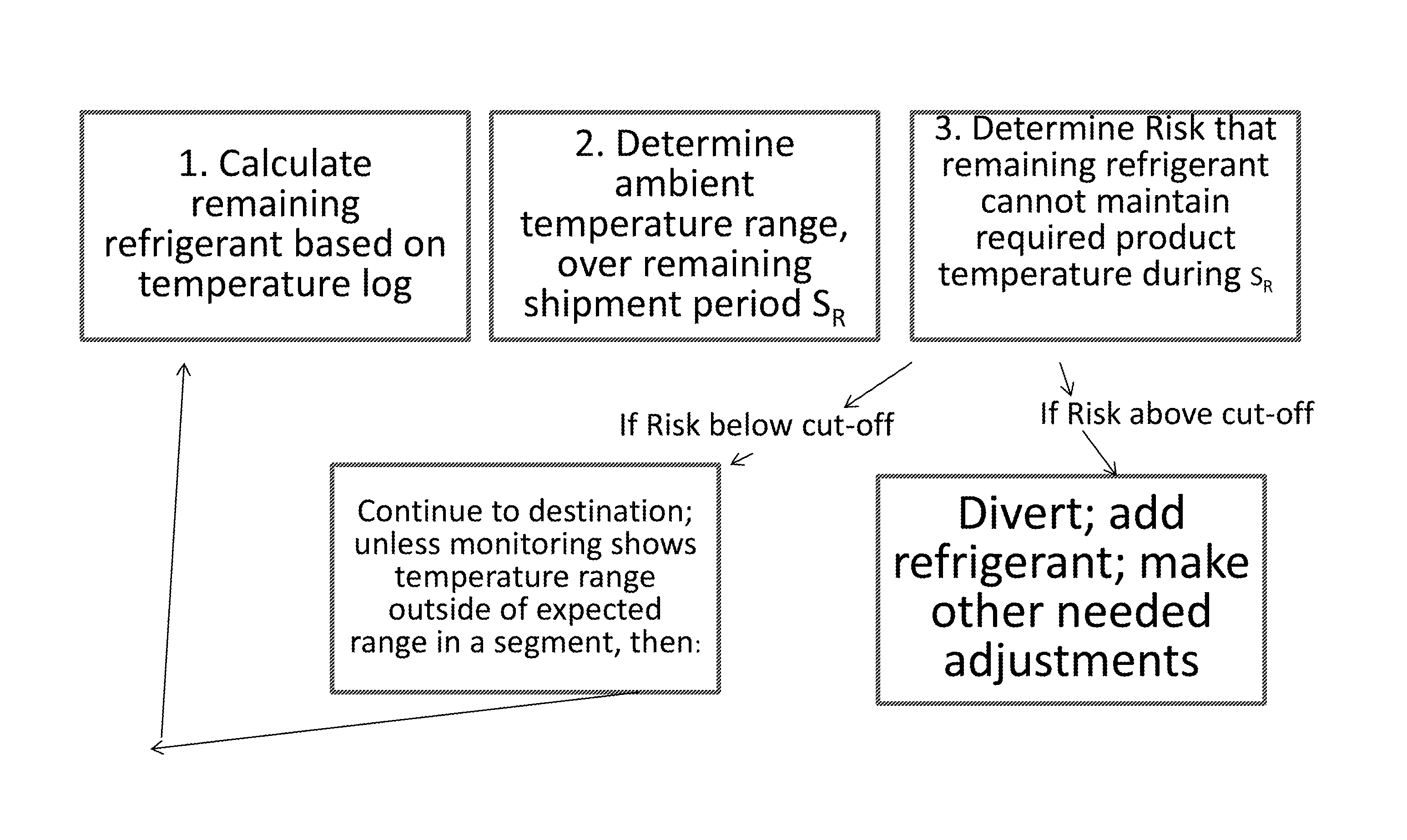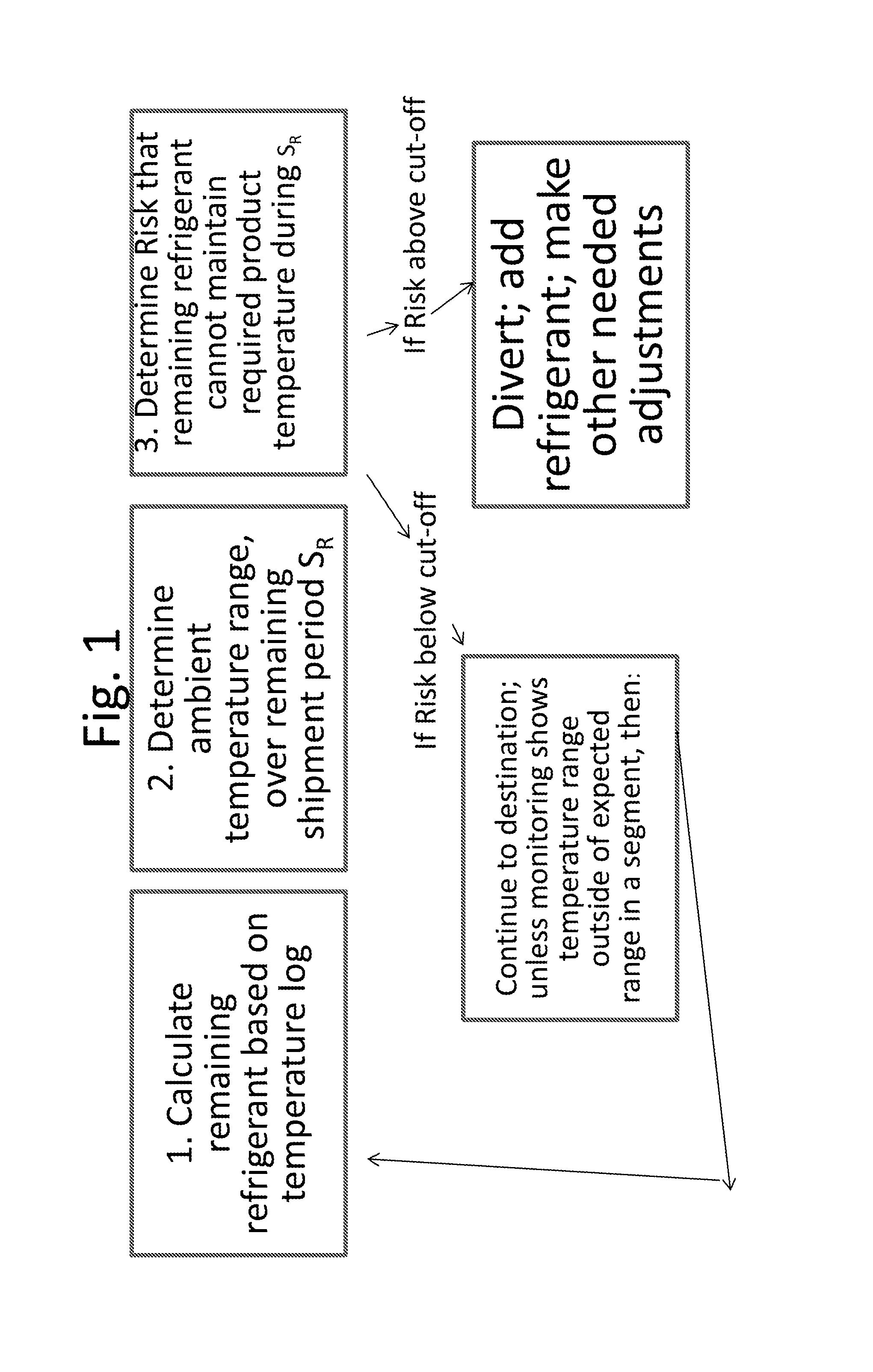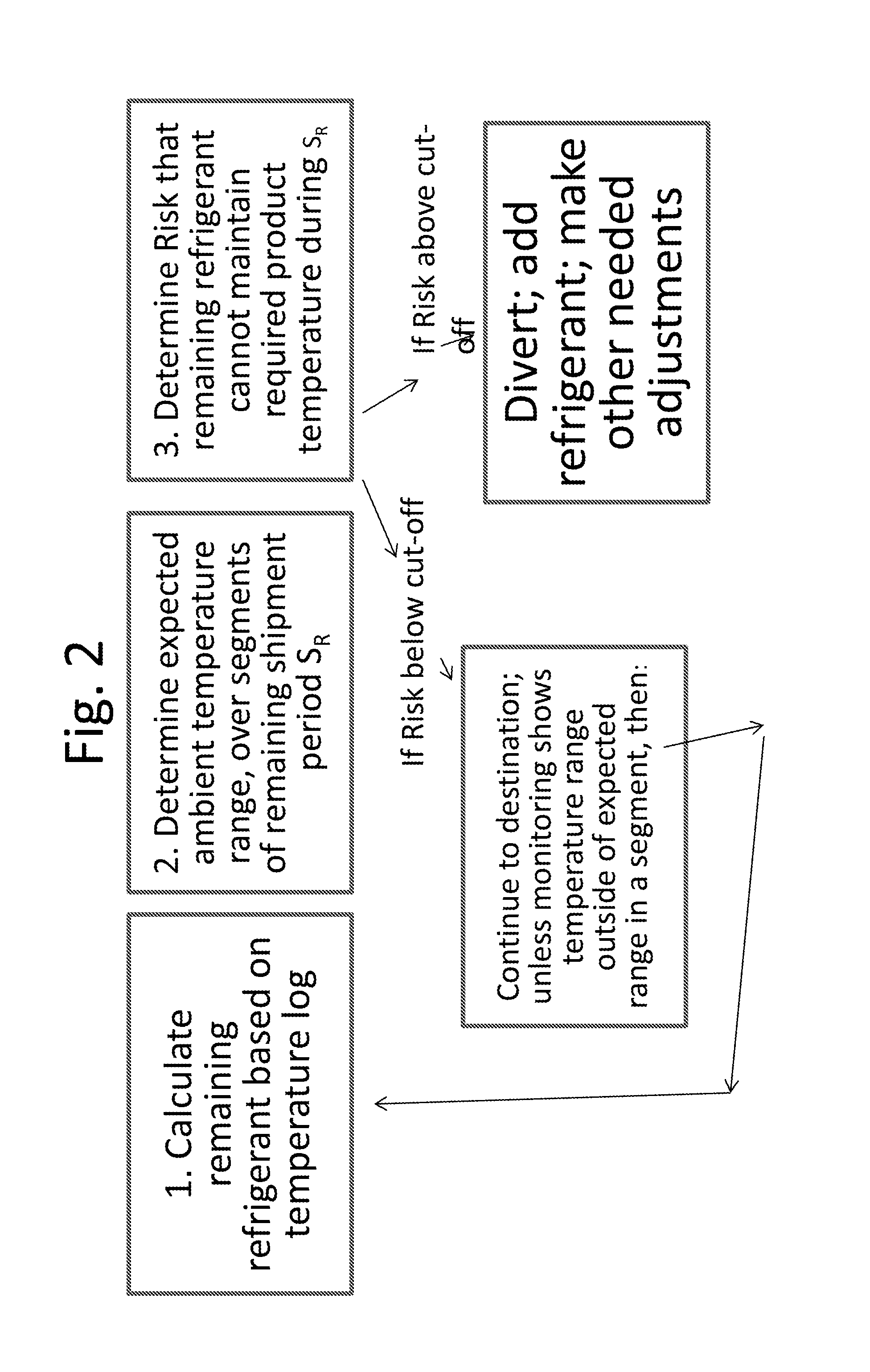Monitoring shipment of biological products to determine remaining refrigerant quantity
a technology for biological products and refrigerant quantity, applied in the field of monitoring shipment of blood and other temperature-sensitive biological products, can solve the problems of blood and perishable biological materials being problematic to be shipped, products that are not acceptable for medical use and thus valueless, and the time in shipment cannot be estimated, so as to shorten the effective life of products
- Summary
- Abstract
- Description
- Claims
- Application Information
AI Technical Summary
Benefits of technology
Problems solved by technology
Method used
Image
Examples
Embodiment Construction
[0019]Monitoring temperature during shipment can be done with one of several commercial systems, including the Escort iMini™, the REDi Wireless™, and the Wireless Mini™, all made by Escort Dataloggers, Inc. (Buchanan, Va.). Data from these monitors can be viewed and plotted using the ESCORT Chartreader™. For the real time monitoring suitable for use with the system herein, either the REDi Wireless™, and the Wireless Mini™ are suitable, as the data can be read or downloaded remotely.
[0020]In the invention, the temperature log is used to predict the amount of refrigerant remaining, and the prediction of remaining shipment time and temperature determines whether action needs to be taken to preserve the value of the cargo—i.e., if the refrigerant is predicted to be insufficient to maintain the required temperature of the cargo. Over the course of shipment, the ambient temperature (i.e., the temperature the shipping container experiences) varies over time. The simplest case to ensure tha...
PUM
| Property | Measurement | Unit |
|---|---|---|
| temperature | aaaaa | aaaaa |
| temperature | aaaaa | aaaaa |
| temperature | aaaaa | aaaaa |
Abstract
Description
Claims
Application Information
 Login to View More
Login to View More - R&D
- Intellectual Property
- Life Sciences
- Materials
- Tech Scout
- Unparalleled Data Quality
- Higher Quality Content
- 60% Fewer Hallucinations
Browse by: Latest US Patents, China's latest patents, Technical Efficacy Thesaurus, Application Domain, Technology Topic, Popular Technical Reports.
© 2025 PatSnap. All rights reserved.Legal|Privacy policy|Modern Slavery Act Transparency Statement|Sitemap|About US| Contact US: help@patsnap.com



